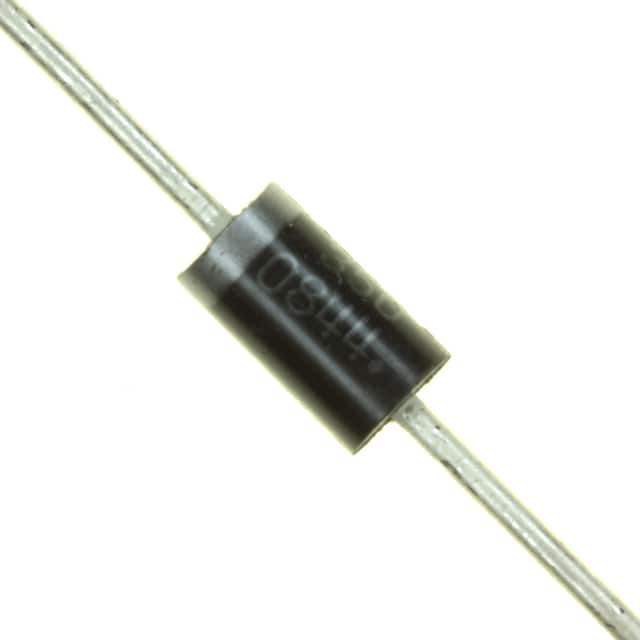Viz Specifikace pro podrobnosti o produktu.

1N5402RL Diode
Product Overview
The 1N5402RL diode belongs to the category of rectifier diodes. It is commonly used in electronic circuits to convert alternating current (AC) to direct current (DC). The diode exhibits characteristics such as high current capability, low forward voltage drop, and rugged construction. It is typically packaged in a cylindrical glass body with axial leads and is available in various packaging quantities.
Specifications
- Maximum Average Forward Current: 3A
- Peak Repetitive Reverse Voltage: 200V
- Maximum Forward Voltage Drop: 1V
- Operating Temperature Range: -65°C to +175°C
Detailed Pin Configuration
The 1N5402RL diode has two leads, with the anode connected to the positive terminal and the cathode connected to the negative terminal.
Functional Features
- High current carrying capability
- Low forward voltage drop
- Rugged construction for reliability
Advantages and Disadvantages
Advantages
- High current handling capacity
- Low forward voltage drop
- Robust construction for durability
Disadvantages
- Relatively higher reverse recovery time compared to fast recovery diodes
Working Principles
The 1N5402RL diode operates on the principle of allowing current to flow in one direction while blocking it in the opposite direction. When a positive voltage is applied to the anode with respect to the cathode, the diode conducts, allowing current to flow. In the reverse bias condition, the diode blocks the flow of current.
Detailed Application Field Plans
The 1N5402RL diode finds extensive use in power supply circuits, battery chargers, voltage regulators, and other applications requiring AC to DC conversion. It is also employed in rectification and freewheeling diode functions in various electronic devices and equipment.
Detailed and Complete Alternative Models
- 1N4001
- 1N4007
- 1N5819
- 1N5399
- 1N5822
This completes the entry for the 1N5402RL diode, providing comprehensive information about its product details, specifications, functional features, advantages, disadvantages, working principles, application field plans, and alternative models.
Seznam 10 běžných otázek a odpovědí souvisejících s aplikací 1N5402RL v technických řešeních
What is the maximum voltage rating of 1N5402RL?
- The maximum voltage rating of 1N5402RL is 200 volts.
What is the maximum current rating of 1N5402RL?
- The maximum current rating of 1N5402RL is 3 amperes.
What is the forward voltage drop of 1N5402RL at its rated current?
- The forward voltage drop of 1N5402RL at its rated current is typically around 0.7 volts.
Can 1N5402RL be used for rectification in power supply circuits?
- Yes, 1N5402RL is commonly used for rectification in power supply circuits due to its high voltage and current ratings.
Is 1N5402RL suitable for use in low-frequency applications?
- Yes, 1N5402RL is suitable for use in low-frequency applications such as power supplies and rectifiers.
What is the maximum junction temperature of 1N5402RL?
- The maximum junction temperature of 1N5402RL is typically 150°C.
Does 1N5402RL require a heatsink for high-power applications?
- Yes, for high-power applications, it is recommended to use a heatsink with 1N5402RL to dissipate heat effectively.
Can 1N5402RL be used in reverse-biased mode for protection?
- Yes, 1N5402RL can be used in reverse-biased mode for protection against voltage spikes and transients.
What is the typical recovery time of 1N5402RL?
- The typical recovery time of 1N5402RL is in the range of 500 nanoseconds.
Are there any common failure modes associated with 1N5402RL?
- Common failure modes for 1N5402RL include thermal runaway under high current conditions and voltage breakdown under excessive reverse bias.
These questions and answers cover various aspects of the application of 1N5402RL in technical solutions, including its electrical characteristics, suitability for different circuit types, and potential failure modes.

